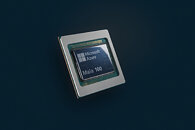- Joined
- Aug 19, 2017
- Messages
- 2,964 (1.06/day)
During its Ignite conference, Microsoft introduced a duo of custom-designed silicon made to accelerate AI and excel in cloud workloads. First of the two is Microsoft's Azure Cobalt 100 CPU, a 128-core design that features a 64-bit Armv9 instruction set, implemented in a cloud-native design that is set to become a part of Microsoft's offerings. While there aren't many details regarding the configuration, the company claims that the performance target is up to 40% when compared to the current generation of Arm servers running on Azure cloud. The SoC has used Arm's Neoverse CSS platform customized for Microsoft, with presumably Arm Neoverse N2 cores.
The next and hottest topic in the server space is AI acceleration, which is needed for running today's large language models. Microsoft hosts OpenAI's ChatGPT, Microsoft's Copilot, and many other AI services. To help make them run as fast as possible, Microsoft's project Athena now has the name of Maia 100 AI accelerator, which is manufactured on TSMC's 5 nm process. It features 105 billion transistors and supports various MX data formats, even those smaller than 8-bit bit, for maximum performance. Currently tested on GPT 3.5 Turbo, we have yet to see performance figures and comparisons with competing hardware from NVIDIA, like H100/H200 and AMD, with MI300X. The Maia 100 has an aggregate bandwidth of 4.8 Terabits per accelerator, which uses a custom Ethernet-based networking protocol for scaling. These chips are expected to appear in Microsoft data centers early next year, and we hope to get some performance numbers soon.




View at TechPowerUp Main Site | Source
The next and hottest topic in the server space is AI acceleration, which is needed for running today's large language models. Microsoft hosts OpenAI's ChatGPT, Microsoft's Copilot, and many other AI services. To help make them run as fast as possible, Microsoft's project Athena now has the name of Maia 100 AI accelerator, which is manufactured on TSMC's 5 nm process. It features 105 billion transistors and supports various MX data formats, even those smaller than 8-bit bit, for maximum performance. Currently tested on GPT 3.5 Turbo, we have yet to see performance figures and comparisons with competing hardware from NVIDIA, like H100/H200 and AMD, with MI300X. The Maia 100 has an aggregate bandwidth of 4.8 Terabits per accelerator, which uses a custom Ethernet-based networking protocol for scaling. These chips are expected to appear in Microsoft data centers early next year, and we hope to get some performance numbers soon.




View at TechPowerUp Main Site | Source




